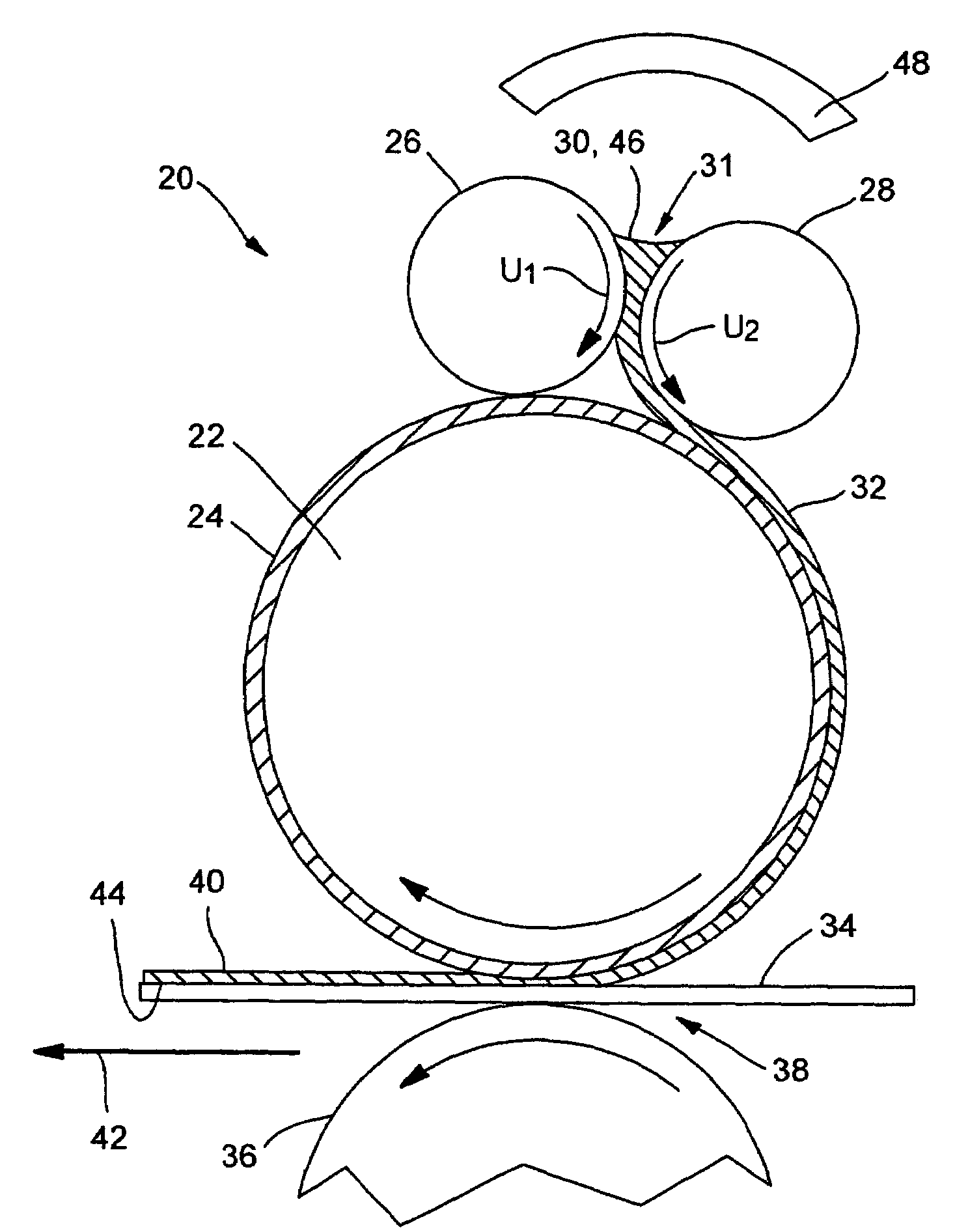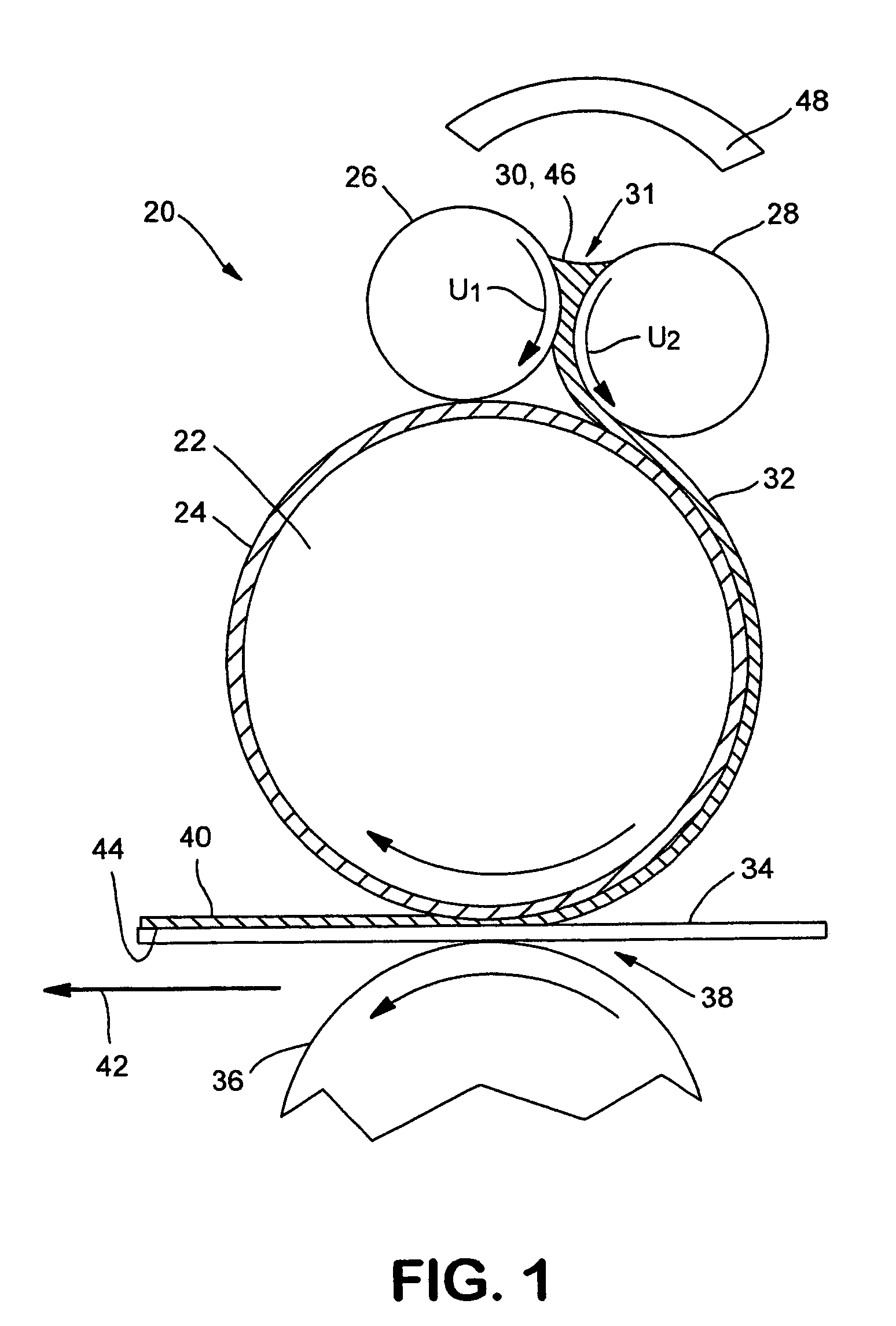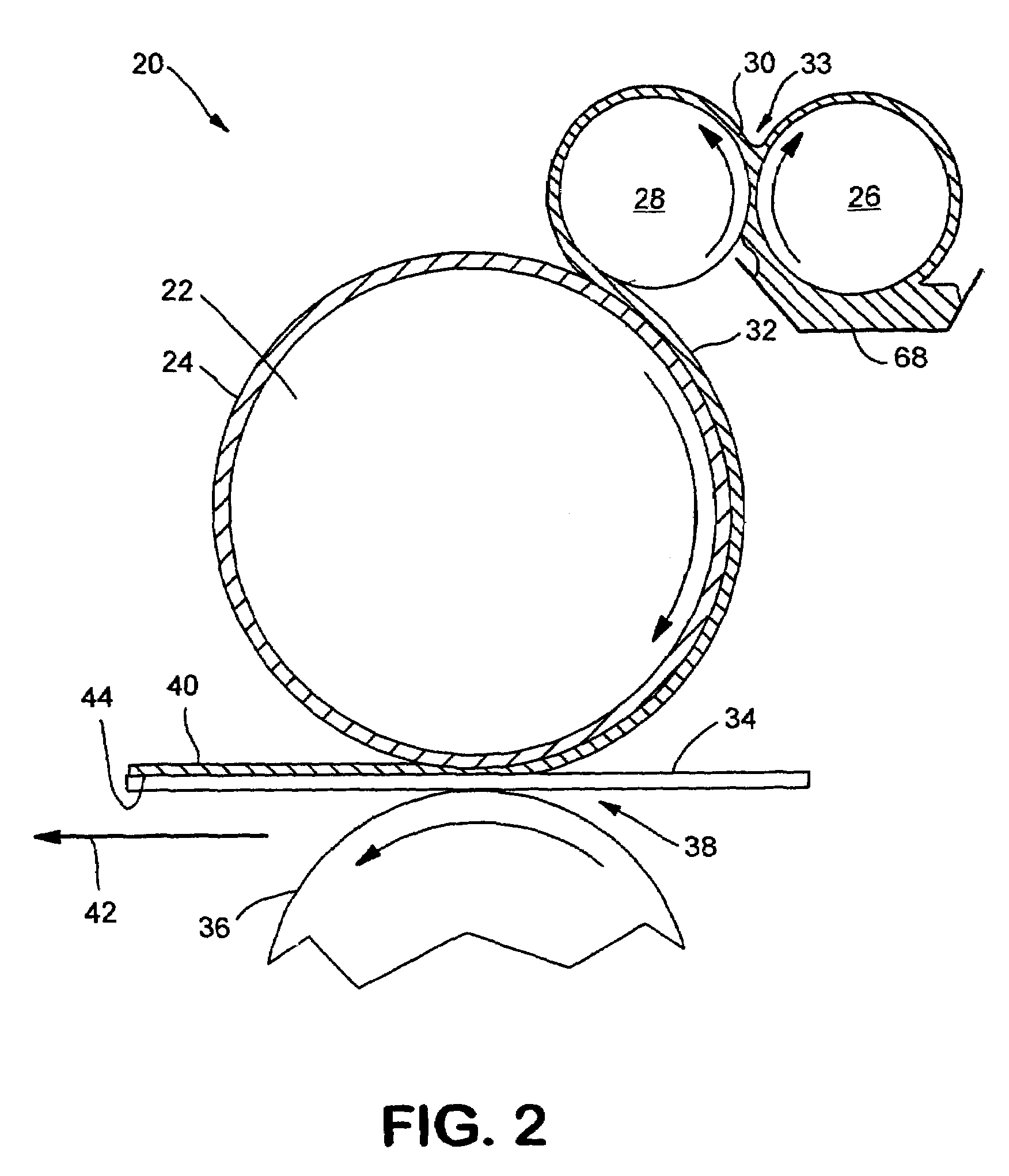Structural printing of absorbent webs
- Summary
- Abstract
- Description
- Claims
- Application Information
AI Technical Summary
Benefits of technology
Problems solved by technology
Method used
Image
Examples
example 1
[0179]To demonstrate the potential for flexographic printing to transfer substantial quantities of a high solids, high-viscosity adhesive material to a paper surface, a reel of commercial coated printing paper was flexographically printed with a hot melt adhesive using the heated flexographic printing equipment of Propheteer International (Lake Zurich, Ill.). The Propheteer 2000 3-Color line was used, comprising an unwind unit, a UV curing station, a flexographic hot melt applicator, a rewind unit, a sheeting station and a stacker. The flexographic applicator was a Flexo Hot Melt Applications Processor manufactured by GRE Engineering Products AG in Steinebrunn, Switzerland (believed to be GRE model HM 220–500). It was adapted to process sheets up to 20 inches wide. The flexographic plate comprised a high-temperature silicone elastomer having a maximum application temperature of 500° F. based on polydimethylsiloxane produced by the Chase Elastomer Division of PolyOne Corporation (Ken...
example 2
[0194]Both hotmelts described in Example 1 were printed with two different patterns according to Example 1, but on a high bulk, resilient, three-dimensional uncreped through-dried web.
[0195]The uncreped web was formed in a similar method to that disclosed in Example 1 of U.S. Pat. No. 6,395,957 to Chen, et al. (herein incorporated by reference as to all relevant matter). The base sheet was produced on a continuous tissue-making machine adapted for uncreped through-air drying, similar to the machine configuration shown in FIG. 4 of Chen, et al. The machine comprised a Fourdrinier forming section, a transfer section, a through-drying section, a subsequent transfer section and a reel.
[0196]The process included a three-layered headbox to form a web with three layers. The two outer layers in the three-layered headbox comprised dilute pulp slurry (about 1% consistency) made from LL19 pulp, a southern softwood bleached kraft pulp of Kimberly-Clark Corp., (Dallas, Tex.). The central layer w...
example 3
[0199]To demonstrate flexographic printing of a synthetic latex emulsion, runs were conducted on a Kimberly-Clark pilot printing facility in Neenah, Wis. A four-roll flexographic system, substantially as shown in FIG. 13, was used, but typically with adhesive applied on one side only. The flexographic system was manufactured by Retroflex, Inc. of Wrightstown, Wis. Flexographic plates were prepared with the three patterns shown in FIGS. 14A–14C.
[0200]A roll of the unprinted, uncreped through-air dried tissue made according to Example 2 was positioned in an unwind stand from which it was guided through the flexographic press. The flexographic printer was configured for single side application with a gap offset of 0.003″ inch. Printed latex was dried as the web passed through an infrared oven set at 380° F. (not shown in FIG. 13). The web with the dried latex was then wound into a roll. The unwind, flexographic printing system, oven drying and curing and rewind units were synchronized ...
PUM
| Property | Measurement | Unit |
|---|---|---|
| Pressure | aaaaa | aaaaa |
| Pressure | aaaaa | aaaaa |
| Pressure | aaaaa | aaaaa |
Abstract
Description
Claims
Application Information
 Login to View More
Login to View More - R&D
- Intellectual Property
- Life Sciences
- Materials
- Tech Scout
- Unparalleled Data Quality
- Higher Quality Content
- 60% Fewer Hallucinations
Browse by: Latest US Patents, China's latest patents, Technical Efficacy Thesaurus, Application Domain, Technology Topic, Popular Technical Reports.
© 2025 PatSnap. All rights reserved.Legal|Privacy policy|Modern Slavery Act Transparency Statement|Sitemap|About US| Contact US: help@patsnap.com



